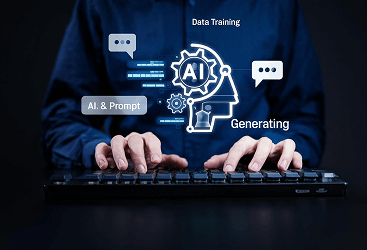
Subscribe to Our Newsletter
Stay updated with the latest in AI training, compliance insights, and new course launches—delivered straight to your inbox.
On This Page
On This Page
Why AI Compliance Is Critical for Protecting Your Business in a Rapidly Changing Landscape
As businesses race to adopt generative AI tools, many overlook one critical factor: compliance. From chatbots and content generators to workflow automation, AI is being integrated into everyday operations—often faster than the policies governing their use.
But without proper oversight, AI can create risks that go far beyond tech. Legal exposure, biased outputs, data breaches, and reputational damage are real consequences of using AI irresponsibly. In a fast-evolving regulatory environment, AI compliance isn’t optional—it’s essential.
In this article, we’ll explore what compliance really means in the AI era, why so many organizations are unprepared, and how your business can take practical steps to stay ahead of the curve.
The Growing Compliance Gap
While AI tools are rapidly being integrated into workflows, compliance frameworks haven’t kept pace. Many organizations lack formal policies, oversight, or even a clear understanding of how AI is being used internally.
In some cases, employees are experimenting with generative AI without any guidance—putting sensitive data, customer interactions, and intellectual property at risk. This growing disconnect between adoption and accountability leaves businesses exposed at exactly the moment when regulators are starting to pay closer attention.
Companies are using AI before establishing clear guidelines or oversight. Call out the dangers of:
Companies are using AI before establishing clear guidelines or oversight. Call out the dangers of:
- Lack of internal policies
- Untrained employees making risky prompts
- No visibility into how models use data
AI Without Guardrails
1. Lack of internal policies
While AI tools are rapidly being integrated into workflows, compliance frameworks haven’t kept pace. Many organizations lack formal policies, oversight, or even a clear understanding of how AI is being used internally. While AI tools are rapidly being integrated into workflows, compliance frameworks haven’t kept pace. Many organizations lack formal policies, oversight, or even a clear understanding of how AI is being used internally.
2. Untrained employees making risky prompts
While AI tools are rapidly being integrated into workflows, compliance frameworks haven’t kept pace. Many organizations lack formal policies, oversight, or even a clear understanding of how AI is being used internally. While AI tools are rapidly being integrated into workflows, compliance frameworks haven’t kept pace. Many organizations lack formal policies, oversight, or even a clear understanding of how AI is being used internally.
3. No visibility into how models use data
While AI tools are rapidly being integrated into workflows, compliance frameworks haven’t kept pace. Many organizations lack formal policies, oversight, or even a clear understanding of how AI is being used internally. While AI tools are rapidly being integrated into workflows, compliance frameworks haven’t kept pace. Many organizations lack formal policies, oversight, or even a clear understanding of how AI is being used internally.
The Hidden Costs of Non-Compliance
Beyond fines and legal issues, the reputational and operational fallout from AI misuse can be long-lasting. Customers lose trust when automation causes errors or bias. Employees may feel uncertain or unsafe using tools without clear guidance. And internal productivity suffers when teams must undo the damage from preventable AI missteps. These hidden costs often far outweigh the effort of doing things right from the start.

The Consequences of Getting It Wrong
AI non-compliance isn’t just a tech problem—it’s a legal and reputational risk:
- Fines from GDPR or future AI regulations
- Intellectual property violations
- Biased outcomes affecting hiring or customer service
Most organizations are accelerating their use of AI across departments—but they’re doing it without the foundational policies, employee training, or compliance oversight necessary to manage the risks. The gap between adoption and accountability is growing wider, and the cost of inaction will only increase.
The Growing Compliance Gap
While AI tools are rapidly being integrated into workflows, compliance frameworks haven’t kept pace. Many organizations lack formal policies, oversight, or even a clear understanding of how AI is being used internally.
In some cases, employees are experimenting with generative AI without any guidance—putting sensitive data, customer interactions, and intellectual property at risk. This growing disconnect between adoption and accountability leaves businesses exposed at exactly the moment when regulators are starting to pay closer attention.
In some cases, employees are experimenting with generative AI without any guidance—putting sensitive data, customer interactions, and intellectual property at risk. This growing disconnect between adoption and accountability leaves businesses exposed at exactly the moment when regulators are starting to pay closer attention.
Bridging the AI Compliance Gap Before It’s Too Late
While AI tools are rapidly being integrated into workflows, compliance frameworks haven’t kept pace. Many organizations lack formal policies, oversight, or even a clear understanding of how AI is being used internally.
In some cases, employees are experimenting with generative AI without any guidance—putting sensitive data, customer interactions, and intellectual property at risk. This growing disconnect between adoption and accountability leaves businesses exposed at exactly the moment when regulators are starting to pay closer attention.